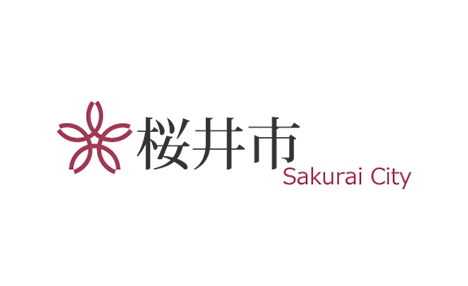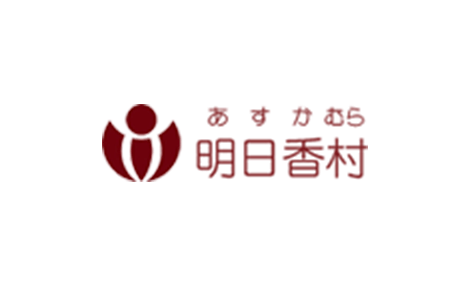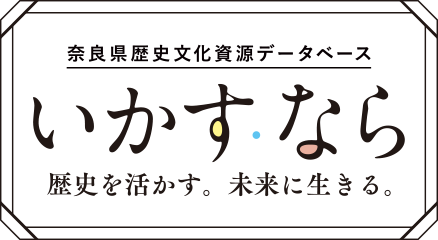Takamatsuzuka Mounded Tomb is a tumulus located south of Fujiwara Palace. The paintings (murals) painted on the walls of the tombs depict male and female figures, the Four Gods, and the constellations known as Stars and Descendants, based on ancient Chinese thought. The female statue painted on the wall of the tomb surrounded by stones had changed depending on the environment, but after about 12 years of restoration, it was restored to its original appearance and is now considered a symbol of “protecting and passing on cultural properties.''
Kids Page for kids
What is Asuka-Fujiwara?
During the Asuka period, which took place 1,300 to 1,400 years ago, there were a wide range of interchanges with China and states in the Korean Peninsula. Our ancestors laid the foundation for a new state by introducing new cultures and social systems from China and the Korean Peninsula as well as combining the traditional cultures they had cultivated with the newly introduced ones to further develop the resulting combined cultures.
In Asuka-Fujiwara, there are many ruins buried underground, including palaces, temples, gardens, and burial mounds that were built during this period.
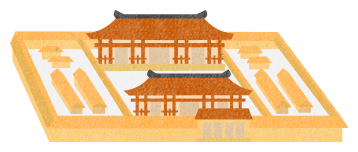

Memories of the birth of Japan are stamped on the land of Asuka-Fujiwara. We aim to have Asuka-Fujiwara included on the World Heritage List as a treasure that should be passed down to future generations.
What kind of period was Asuka period?
In 592, Empress Suiko{brsp} ascended the throne{brsp} at Asuka. The subsequent{brsp} roughly 120-year period up to{brsp} 710, when the capital was transferred from Asuka-Fujiwara to Heijokyo, is called the “Asuka period.”
During this period, major events such as the Isshi Incident and the Jinshin War occurred, and Prince Shotoku, Soga no Umako, Emperor Tenchi, Emperor Tenmu, and Empress Jito played active roles in building a new state.
The spread of Buddhism
During the Asuka period, Buddhist temples were built for the first time, marking the start of the spread of Buddhism. Asuka, Tachibana, Yamada, and Kawara Temples were constructed using new technology introduced from China and the Korean Peninsula.

Completion of Fujiwarakyo
Fujiwarakyo, Japan’s first large city with streets laid out on a grid, was built with the Fujiwaranomiya palace surrounded by the three Yamato mountains (Kagu, Unebi, and Miminashi) as its center.

The start of a state governed in accordance with the ritsuryo codes
The state that was built had ritsu, which punished people who committed crimes, and ryo, which defined the systems of the state and government.
Component parts
-

Takamatsuzuka Mounded Tomb
Takamatsuzuka Mounded Tomb

-
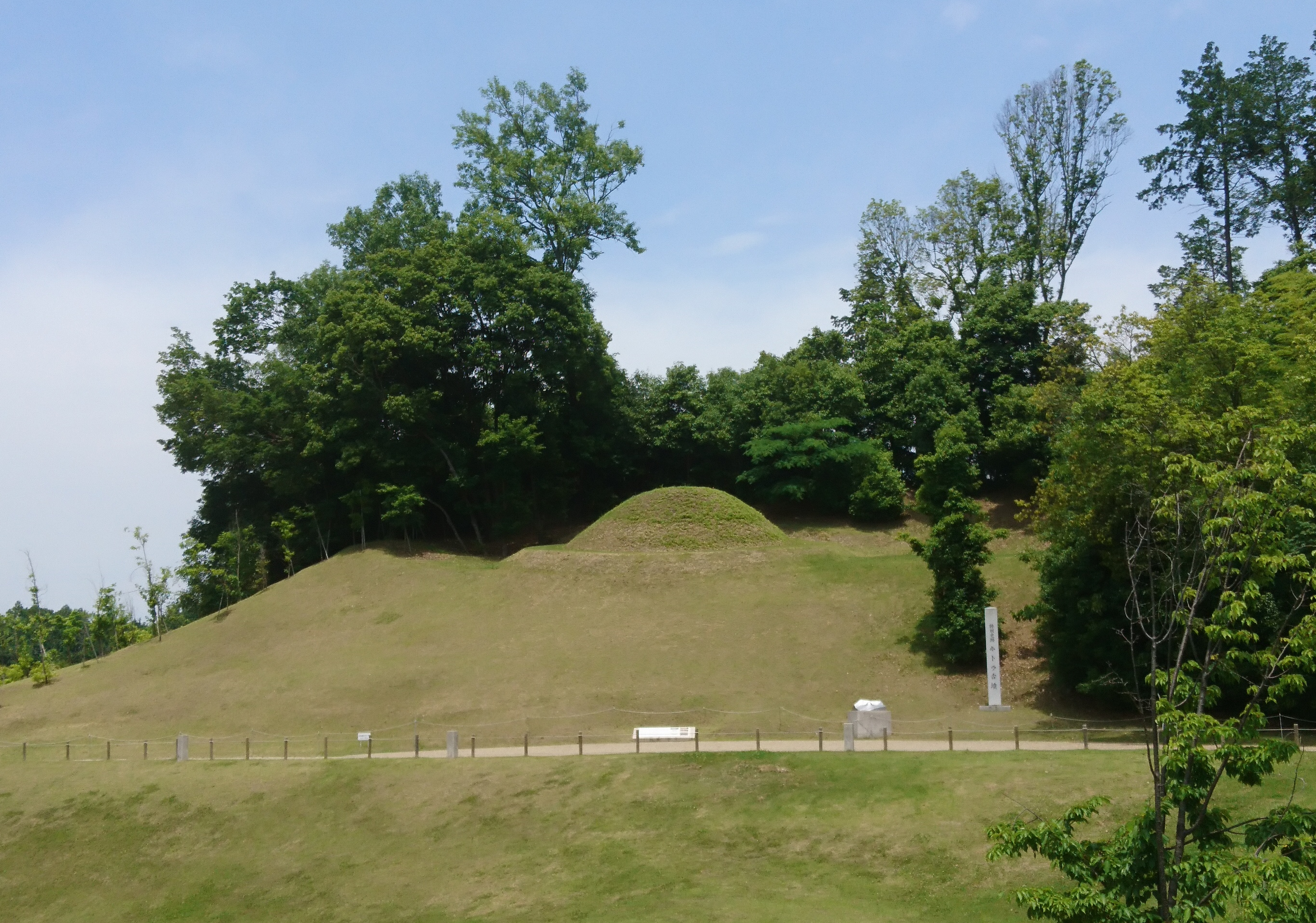
Kitora Mounded Tomb
Kitora Mounded Tomb

Kitora Mounded Tomb is a tumulus (circular tumulus) located south of Fujiwara Palace. This tomb contains the oldest astronomical map that still exists in East Asia, and it is known that this astronomical map was observed in China. In addition to astronomical maps, the paintings (murals) painted on the walls of the tomb depict the four gods, the zodiac, and the sun and moon. The murals have been temporarily removed and stored for safekeeping. Furthermore, the construction of the tombs shows that they were influenced by civil engineering techniques from China and the Korean Peninsula.
-

Nakaoyama Mounded Tomb
Nakaoyama Mounded Tomb

Nakaoyama Mounded Tomb is an octagonal tomb located in Asuka Village. It is thought that this is the tomb of Emperor Monmu because of its octagonal shape, which ranks it as the highest rank, and because it was cremated alone. In addition to cremation, the influence of Buddhism can also be seen in the structure of the grave.
-
.jpg)
Mausoleum of Emperor Temmu and Empress Jito
Mausoleum of Emperor Temmu and Empress Jito
.jpg)
Mausoleum of Emperor Temmu and Empress Jito is the tomb where Emperor Tenmu, who planned to create Fujiwara-kyo, and his empress, Empress Jito, were buried together. It has an octagonal shape that was allowed only for the graves of emperors during the Asuka period. It is located just south of Suzaku-oji, a road that runs vertically through the middle of Fujiwara Palace, indicating that it was built as a tomb and a palace.
-
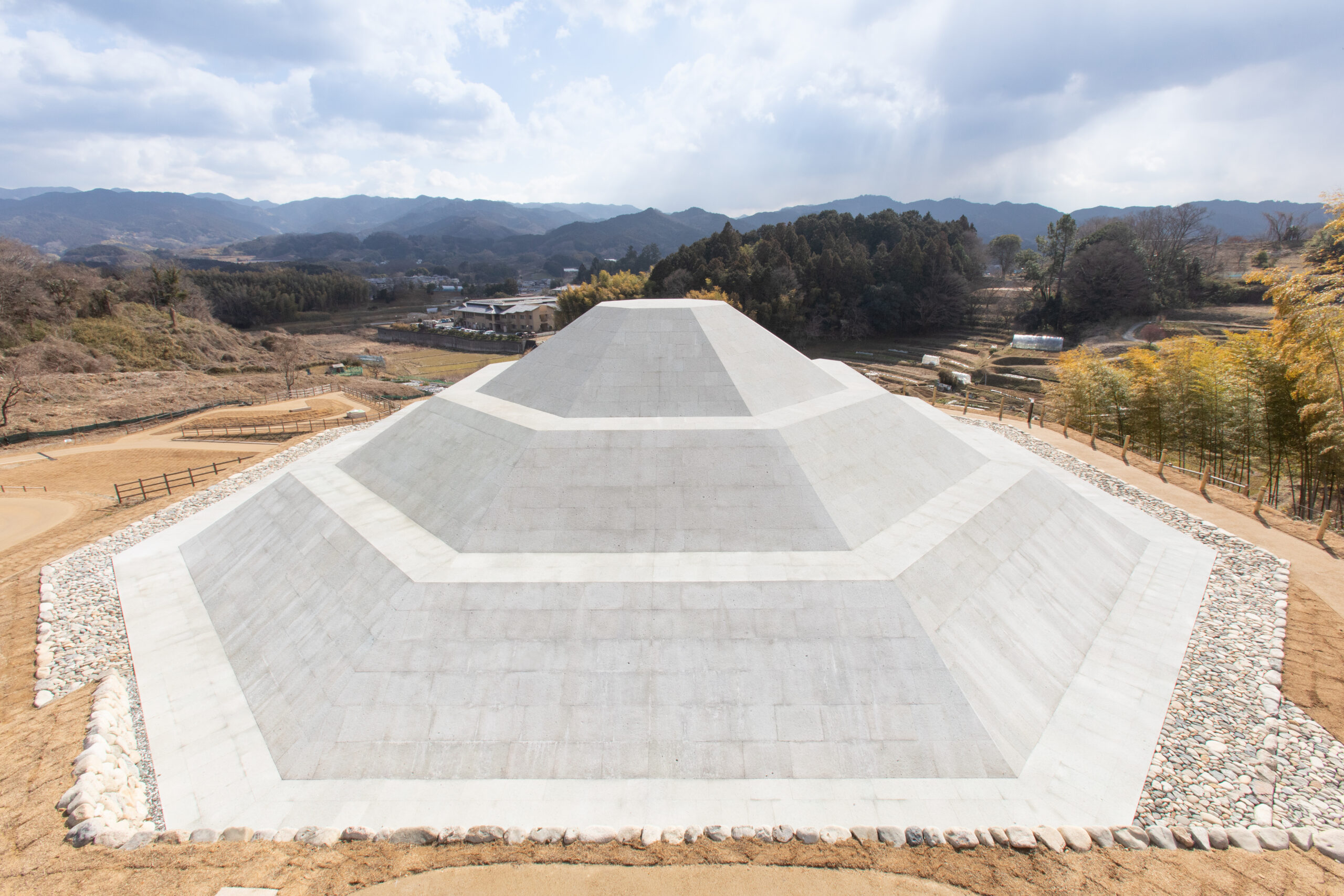
Kengoshizuka Mounded Tomb
Kengoshizuka Mounded Tomb

Kengoshizuka Mounded Tomb is an octagonal tumulus built to the southwest of the Asuka Basin, where the Asuka Palace ruins are located. The octagonal tomb was created using a uniquely Japanese idea, with the aim of establishing a nation with the emperor at the top. Although the shape of the tomb is unique to Japan, the techniques and ideas for making it were adopted from the East Asian continent, making it a unique tomb.
-

Shobuike Mounded Tomb
Shobuike Mounded Tomb

Shobuike Mounded Tomb is a tumulus (square tumulus) built on the slope of a hill to the west of the Asuka Basin, where the Asuka Palace ruins are located. Because it has the same shape as the tombs built for the emperors (kings) of China at the time, it is thought to be the tomb of a person who had great power during the Asuka period.
-
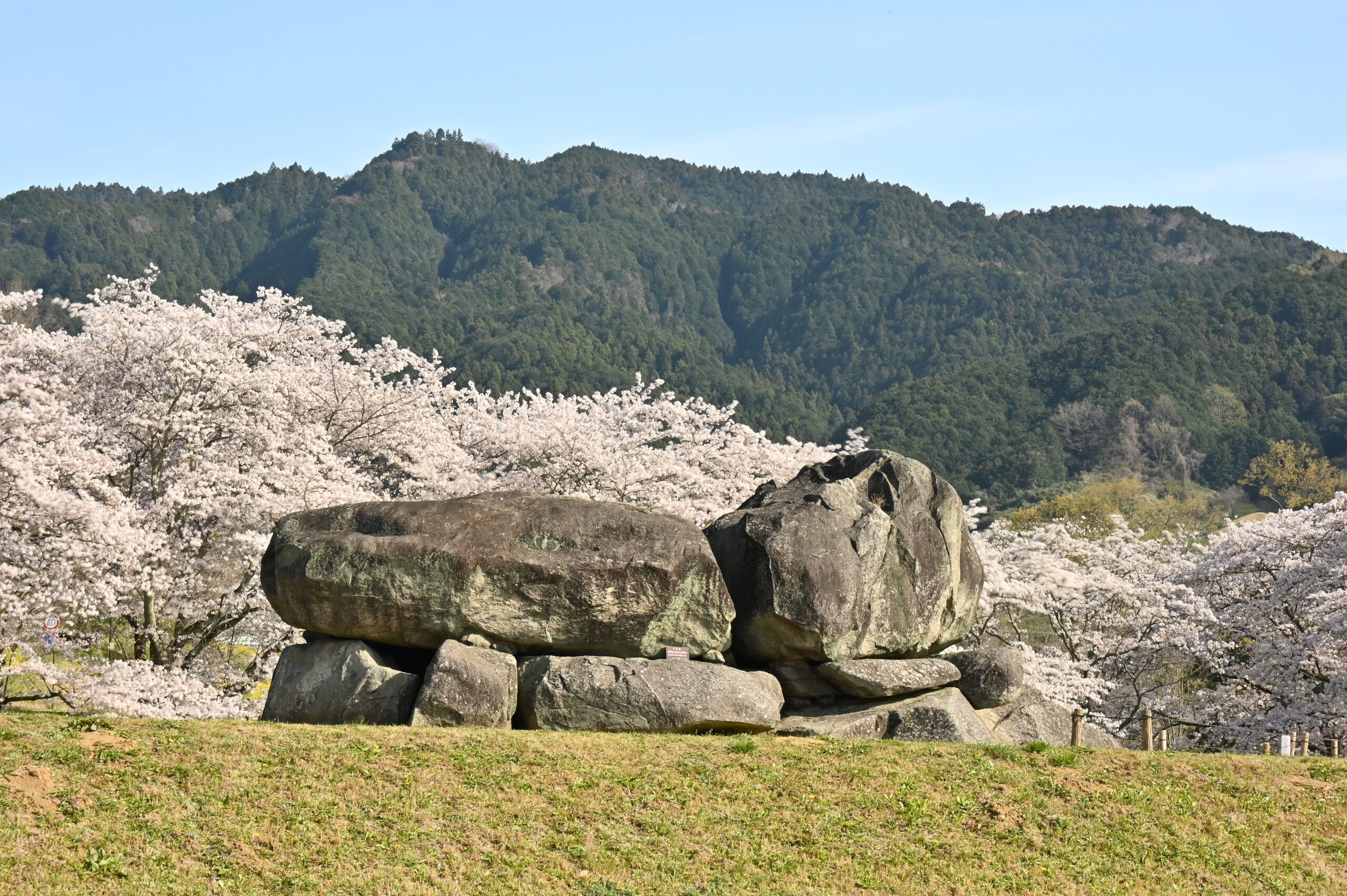
Ishibutai Mounded Tomb
Ishibutai Mounded Tomb

Ishibutai Mounded Tomb is a square-shaped tumulus (square tumulus) with a length and width of 50 meters located in Asuka Village. It is notable for the huge stone ceiling that surrounds the tomb. Because the mound is so large, there is a theory that it is the grave of Soga no Umako. It was already known as a tourist attraction during the Edo period.
-

Motoyakushiji Temple Site
Motoyakushiji Temple Site

Motoyakushi-ji Temple Ruins is the remains of a temple built by the state, located southwest of Fujiwara Palace. It was built by Emperor Tenmu to pray that his wife (who later became Empress Jito) would be cured of her illness, but Emperor Tenmu passed away before it was completed, and Emppress Jito, who carried on his will, built the temple. Construction continued and was completed during the reign of Emperor Monmu. After the capital moved to Heijo-kyo in 710, it was renamed Yakushi-ji Temple and is still used today.
-

Daikandaiji Temple Site
Daikandaiji Temple Site

Daikandaiji Temple Site is a temple built by the state, located southeast of Fujiwara Palace. The nine-storied pagoda, the largest building in the Asuka-Fujiwara temple, was a national symbol common to the countries of East Asia (Tang, Baekje, Silla, and Koguryo). When the capital was moved from Fujiwara-kyo to Heijo-kyo in 710, Daikandai-ji Temple was also moved along with it, and it is still inherited today as Heijo-kyo Daian-ji.
-
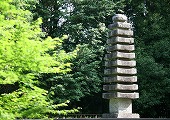
Hinokuma-dera Temple Site
Hinokuma-dera Temple Site

Hinokuma-dera Temple Site is the ruin of a Buddhist temple that was built in the center of a powerful clan (a powerful family in the region) who came across the sea from China and the Korean Peninsula. The way the buildings are arranged is unique and unique, but building foundations using tiles were often seen in temples in the country of Baekje on the Korean peninsula, indicating that there was exchange with East Asia.
-

Kawara-dera Temple Site
Kawara-dera Temple Site

Kawara-dera Temple Site is the ruins of a Buddhist temple built by Emperor Tenji for his late mother, Empress Saimei. The location of the buildings indicates that there was an influence from the Tang Dynasty in China at the time. Later, during the era of Emperor Monmu, it was considered one of the four great temples, along with Daikandaiji Temple, Yakushiji Temple, and Asuka-dera Temple.
-
-scaled.jpg)
Yamada-dera Temple Site
Yamada-dera Temple Site
-scaled.jpg)
Yamada-dera Temple Site is the ruin of a temple built by the Soga clan, who had great power during the Asuka period. Parts of the corridors (long corridors that encircle palaces and temple buildings) discovered during the excavations show an architectural style older than that of Horyuji Temple, and are on display at the Asuka Historical Museum.
-
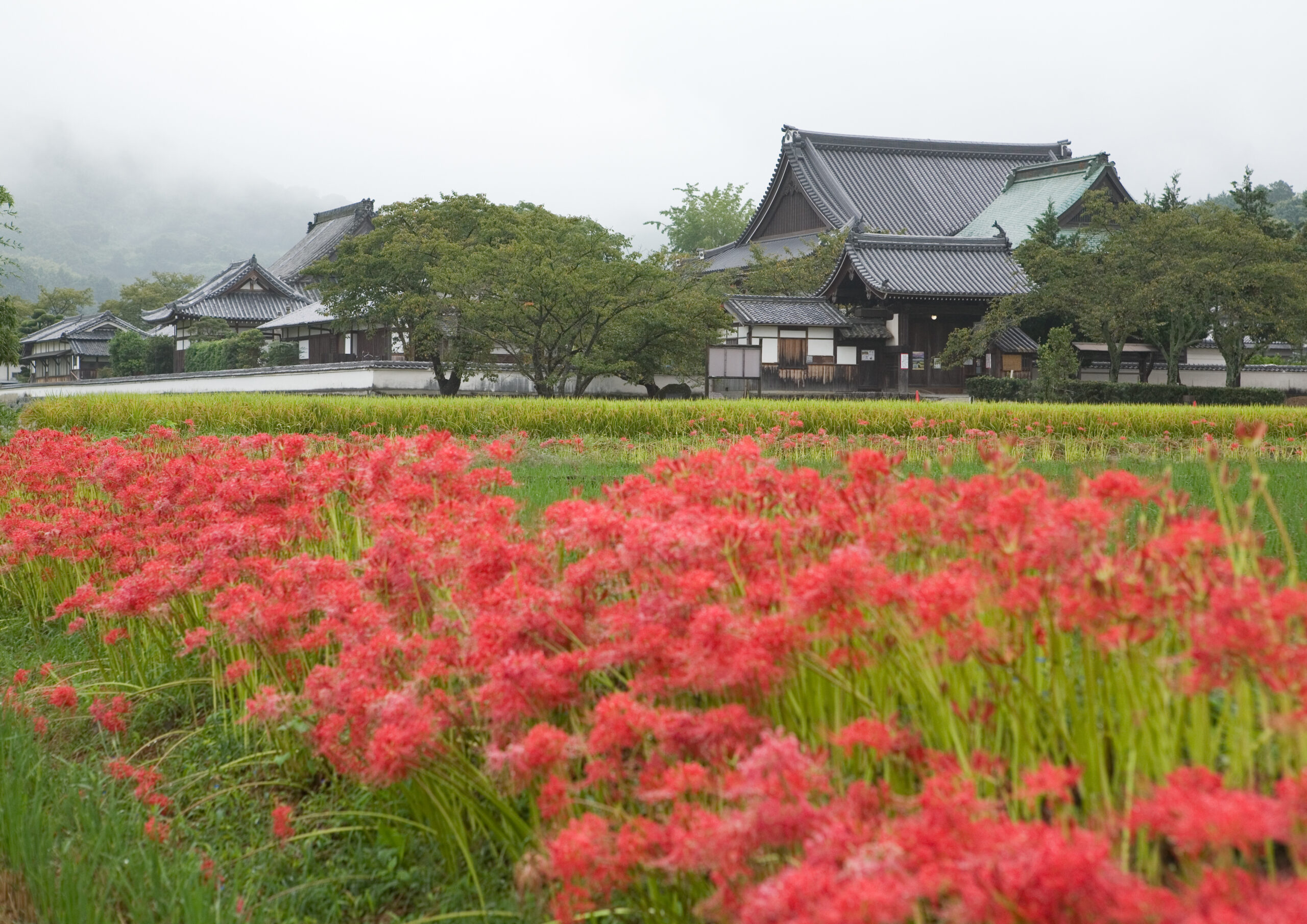
Tachibana-dera Temple Site
Tachibana-dera Temple Site

Tachibana-dera Temple Site is one of the oldest temples in Japan where women who became monks and entered Buddhism lived. The way the buildings are lined up shows that it was influenced by the country of Baekje, which was on the Korean peninsula at the time. Although it has been burnt down twice, it has been repaired and rebuilt, and is now passed down as a temple for monks.
-
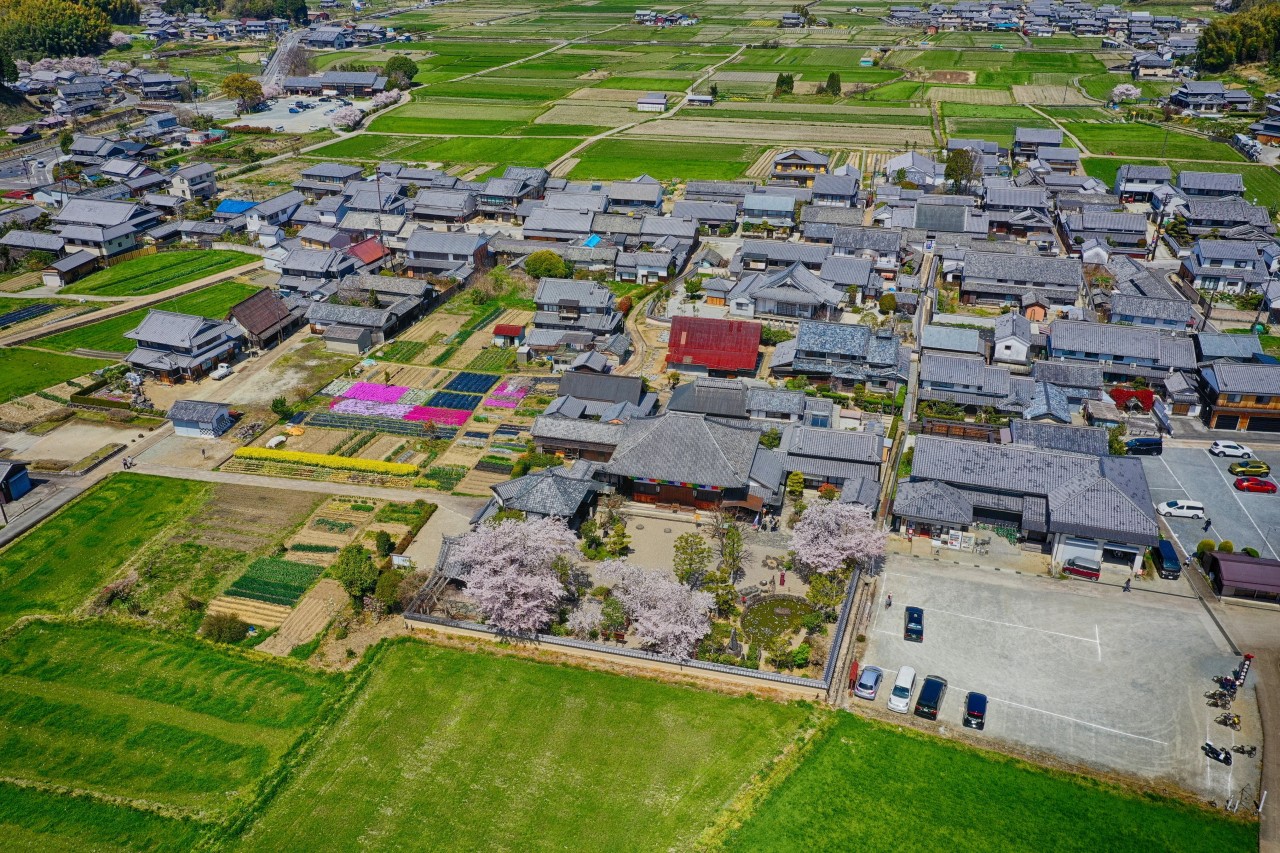
Asuka-dera Temple Site
Asuka-dera Temple Site

Asuka-dera Temple Site is the ruin of Japan's first full-scale Buddhist temple. Buddhism, which was introduced to Japan through exchanges with China and the Korean Peninsula, played a major role in nation-building in ancient Japan. When Asuka-dera Temple was built, techniques passed down by people called Toraijin(immigrants) who came from the Korean Peninsula and people called Rugakusho and Gakumonsou who returned to Japan after crossing the sea from what was then Japan (Wa) to learn Chinese knowledge and techniques. Asuka Daibutsu, which was built by Toraijin, still remains in its original location.
-

Fujiwara Palace Site
Fujiwara Palace Site

Fujiwara Palace Site is the remain of a palace that shows that Japan was founded as a nation centered on the Emperor, based on the laws known as the Ritsuryo code, due to exchanges with China and the Korean Peninsula at the time. Fujiwara Palace was the residence of the emperor, the place where government was conducted, and the place where officials worked. Fujiwara-kyo was built around Fujiwara Palace, and the residences of government officials were spread out there. The Fujiwara-kyo Suzaku-oji was built as a road leading to the palace, and Fujiwara-kyo was placed in the center of Fujiwara-kyo.
-
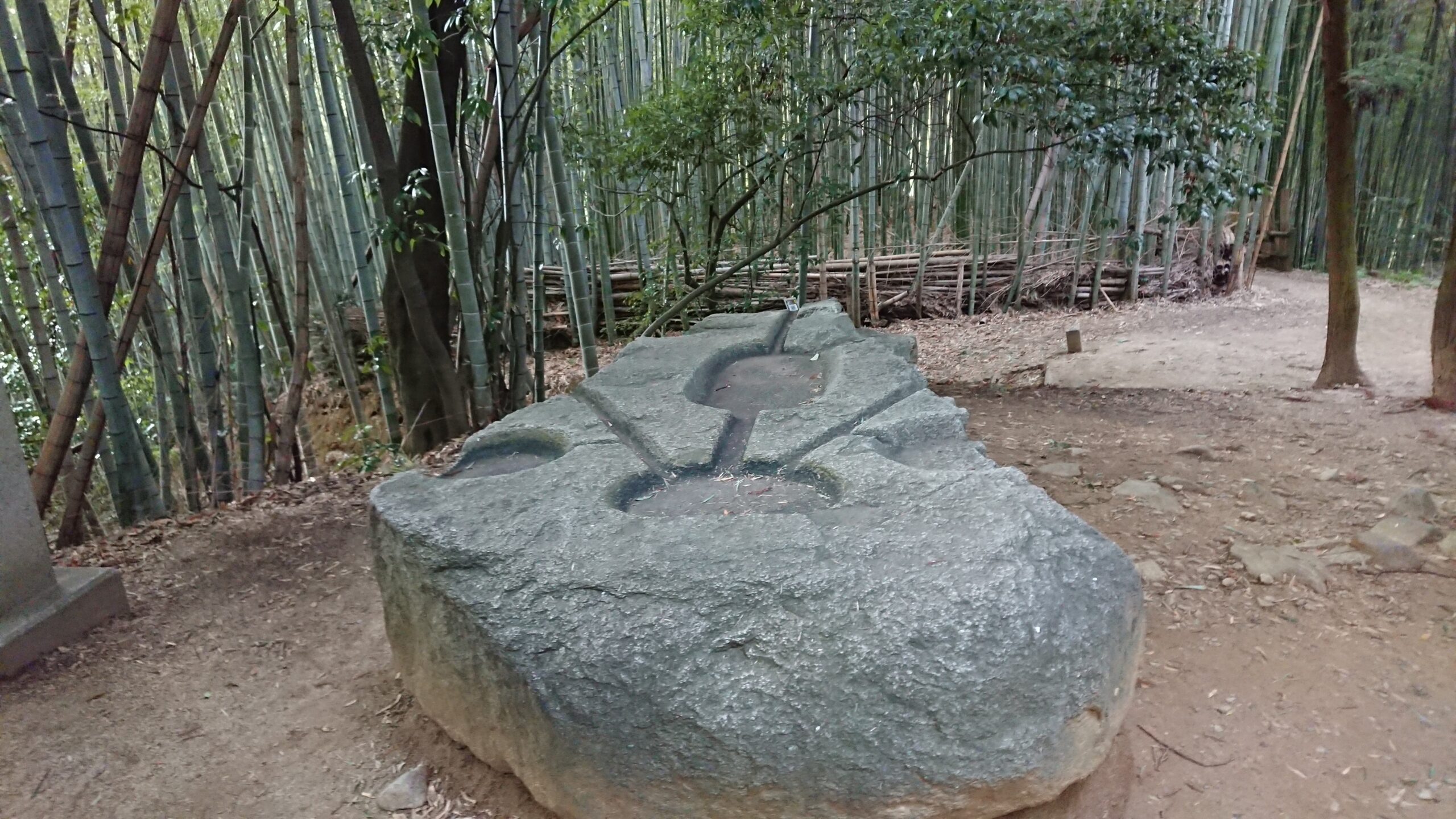
Sakafuneishi Ritual Site
Sakafuneishi Ritual Site

Sakafuneishi Ritual Site is the remain of a facility built on a hill near Asuka Palace where festivals were held. Matsurigoto refers to rituals and politics to honor ancestors and gods. The hill is surrounded by stone walls, and at the foot of the hill there is a facility that draws water from below the ground and a turtle-shaped stone aquarium, and when you climb to the top of the hill, you will find a large stone called Sakafuneishi. Although it is still a mystery as to how the Sakafuneishi was used, it is believed that it was used for Matsurigoto held by the Emperor.
-
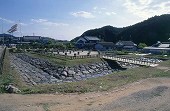
Asuka Water Clock Site
Asuka Water Clock Site

Asuka Water Clock Site is the site of Japan's oldest water clock tower. A water clock called a rōkokudai was considered a system in which water was poured from the top step of a step-shaped water well, and the time was measured by the rise of the scale on the bottom step.
-
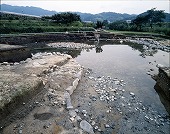
Asuka Pond Garden Site
Asuka Pond Garden Site

Asuka Pond Garden Site is the rear of the garden next to Asuka Palace. There was a south pond and a north pond, and there was a fountain made of stone using high technology and a very large stone tank. In China and the Korean Peninsula, techniques similar to those used in some parts of the Asuka Pond Garden Site were used, and the technique used in the garden pond was created by people who came to what was then Japan (Wa) from China and the Korean Peninsula. It shows what was communicated. Some of its designs and structures can only be seen in Japan, making it one of the earliest examples of a garden that would later become the Japanese garden.
-

Asuka Palace Site
Asuka Palace Site

Asuka Palace Site is the remain of a palace that served as both the residence of the emperor and the place for political affairs. It was built in present-day Asuka Village. While previous palaces changed their locations from generation to generation, from 630 when Asuka Palace was built until it was moved to the large capital called Fujiwara-kyo, the palace remained in the same location even if the emperor changed, was built.
About World Heritage
World Heritages are irreplaceable treasures created by humanity and the earth that should be handed down to future generations. There are three types of World Heritages, including Cultural Heritages, such as buildings and ruins, and Natural Heritages, such as the precious habitats of plants and animals.

The United Nations Educational, Scientific and Cultural Organization (UNESCO) decides whether candidate sites recommended by various countries should be included in the World Heritage List.
Currently,* a total of 1,248 sites have been registered as World Heritage sites. Sites included in the List must carefully protect the properties registered as World Heritages. Among the 1,248 World Heritages, there are 21 Cultural Heritage sites and 5 Natural Heritage sites in Japan for a total of 26 sites.
※As of August 2025



List of related sites
Q&A
The palace where the emperor lived had been a place of rituals and politics, but administrative functions were added to it and consolidated there.
In addition, the results of excavations and studies that have been conducted over the years indicate that the events written in these history books occurred in Asuka-Fujiwara.
Dictionary of Terms
Explanation of some terms to learn more about Asuka-Fujiwara.
Organization
| United Nations | It is an organization established to maintain peace in the world, to resolve conflicts between countries, and to protect human rights. As of February 2024, there are 196 countries in the world, of which 193 are members of the United Nations. |
|---|---|
| UNESCO | UNESCO is one of the specialized agencies of the United Nations, whose purpose is to promote international peace and the well-being of mankind through cooperation and exchange in the fields of education, science, and culture. UNESCO’s work covers many fields, including education and culture, and one of its tasks is the registration of World Heritage sites. UNESCO has established an organization called the World Heritage Committee, which discusses whether or not a site may be inscribed on the World Heritage List. |
Country
| The Sui Dynasty / Tang Dynasty | The Sui Dynasty (581~618) and Tang Dynasty (618~907) were countries that existed in what is now China some 1100~1400 years ago. Politics was centered on the emperor (the king in China) according to the law called Ritsuryo. Since it had more advanced culture and technology than Japan at that time, Japan dispatched officials and introduced advanced culture and technology, trying to catch up with Sui Dynasty and Tang Dynasty. |
|---|
Historical Terms
| Capital | It was a town that included the emperor’s residence and the houses of the government and officials that surrounded it. Asuka Palace and Fujiwara-kyo were built in present-day Asuka Village and Kashihara City. The Asuka Palace was the capital of the period and symbolized the system of governing the country. |
|---|---|
| Ritsuryo | Laws were created in ancient China. “Ritsu” were laws that punished those who committed crimes, and “Ryo” were laws that established national and political structures. Japan sent officials to China and introduced advanced culture and technology, including the Ritsuryo. As a result, the “Taiho Ritsuryo” law was created in Asuka Period Japan. |
| Ancient Tomb | In ancient societies, tombs were heaped high with earth to bury kings, emperors, powerful families, and other members of the ruling class. They were made in square, octagonal, and round tombs, as well as tombs with a combination of a square and a circle in the front and back. |
| Palace | These are buildings where the emperor lived, politics and ceremonies were held. In present-day Asuka Village and Kashihara City, there are locations where palaces were built during the Asuka Period. |
| Emperor (in the Asuka period) | It was established in the late 7th century, and was the entity we had previously called the “Okimi”. The emperor lived in a palace and ruled the country. |
| Ruins | These are places where the remains of ancient activities remain above or below ground. Examples include the ruins of old buildings and ancient burial mounds where ancient people were buried. |
| Buddhism | It is a religion created by an Indian man named Buddha about 2,500 years ago. Buddhism was introduced from India to China and from China to the Korean peninsula, and was introduced to Japan in the middle of the 6th century. |
| Jobo-sei (ancient land system) | It is a town planning method based on the ancient Chinese capital, in which the land is divided by roads running east-west and north-south to create a grid pattern town. |
Events
| Isshi incident / Taika Reform | During the Asuka period, the Soga clan had the power to influence politics and conducted it in their favor. To change this situation, in 645, Prince Nakanooeno-miko overthrew Soga no Iruka, who was then in power. This was the Ishi Incident. It is said that the Ishi Incident took place at the Asuka Palace site, located in present-day Asuka Village. After the Ishi Incident, the government was changed from one centered on powerful families to one centered on the emperor, which is called the Taika Reformation. |
|---|---|
| Jinshin War | After the death of Emperor Tenji, a battle ensued between Emperor Tenji’s younger brother, Prince Oamano and Emperor Tenji’s son, Prince Otomo, for the Emperor’s seat. This conflict was the largest battle in ancient Japan, and the battle took place in Nara, Shiga, Gifu, and Mie prefectures. This was the Jinshin Rebellion. The victor of the Jinshin War, Prince Oama-no miko, became Emperor Temmu and proceeded to build a new country. |
Historical Figure
| Empress Suiko | Empress Suiko was named Nukatabe no Hime-miko before her accession to the throne. She acceded to the throne at the age of 39, becoming Japan’s first female emperor. Emperor Suiko’s government was supported by his nephew Prince Shotoku and his uncle Soga-no-Umako. In particular, the 12 ranks of the crown and the 17 articles of the Constitution, which are said to have been established mainly by Prince Shotoku, were an expression of the Emperor’s intention to make Japan an emperor-centered nation. In addition, the government tried to reflect the culture, technology, and laws of the Sui Dynasty in its politics by sending an envoy to China (Sui Dynasty) at that time. |
|---|---|
| Prince Shotoku | He was very clever from his childhood, and when his aunt, Emperor Suiko, became emperor, he assumed political power as regent at the young age of 20. Together with Soga no Umako, he conducted politics, adopted advanced Chinese culture and institutions, and promoted the establishment of a centralized state system centering on the emperor. He also actively introduced Buddhism and founded Horyu-ji Temple. The name “Prince Shotoku,” as we call him, was invented by later generations in honor of his achievements, and his name before his death was Umayado-o. His name is said to have originated either from his birth in front of Umagoya or from the name of a place. |
| Soga no Umako | The Soga were influential in Japanese politics during the Asuka period. Soga Umako also had strong political power and real authority. In order to establish Buddhism in Japan, he and Prince Shotoku fought against the Mononobe clan and won the battle. As a result of this victory, many temples were built in Asuka, including Asukadera Temple. |
| Emperor Tenji | Emperor Tenji, whose name before his accession was Prince Nakanooeno, overthrew the Soga clan in 645 because of their tyrannical politics and proceeded to reform the country. This was the Taika Reform. The Taika Reform brought about a shift from a government centered on powerful clans to one centered on emperors. His younger brother was Emperor Temmu (Prince Oamano) and his daughter was Emperor Jito (Uno no Sararah no Hime-miko). |
| Emperor Temmu | Emperor Temmu, whose name before his accession was Ooamanomiko, defeated his nephew Otomo no Miko in the Imjin War, the greatest war in ancient Japan, and ascended the throne as emperor in 673. He initiated the establishment of a political system in which the imperial family assumed leadership, initiated the enactment of laws, ordered the writing of histories, and conducted other political activities that laid the foundation of the nation. His elder brother was Emperor Tenchi (Emperor Naka-no-Ohio), who carried out the Taika Reform, and his wife was the future Emperor Jito (Un-no-Sarara-no-Hime-miko). |
| Empress Jito | At the age of 13, she became the wife of Prince Oamano-miko (the younger brother of Emperor Nakanooeno-miko), and after the Jinshin War (672), when Emperor Oamano-miko came to the throne (Emperor Temmu), she became his empress. She ascended to the throne a short time after the death of Emperor Temmu, ruled firmly according to the Asuka Kiyomihara Code, and built the Fujiwara-kyo as the new capital. |
| Immigrants | People who crossed the sea from foreign countries and came to live in Japan. During the Asuka Period, many people from the Korean Peninsula and China crossed the sea to come to Japan. They introduced advanced continental cultures such as Buddhism and building techniques to Japan. |








